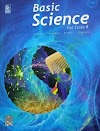Exercises
Question
A. Answer the following in not more than 20 words.
1. What are unicellular organisms?
2. Why do we stain specimens before viewing them under a microscope?
3. Name the four types of animal tissue.
4. What is a vacuole?
5. In what type of cells would you expect chloroplasts to be present?
B. Answer the following in not more than 40 words.
1. Why is the cell known as the structural and functional unit of life?
2. What are the different types of plastids and what do they do?
3. Which tissues make up the vascular bundles? What do they do?
4. Why is the nucleus called the control room of the cell?
5. Why is the plasma membrane called selectively permeable?
C. Answer the following in not more than 100 words.
1. What are the basic differences between plant cells and animal cells?
2. Describe the different regions seen in a transverse section of a dicotyledonous stem viewed under the microscope.
D. Choose the correct option in each of the following
1. Cheek cells are
(a) epithelial cells
(c) vascular cells
(b) epidermal cells
(d) guard cells
2. Vascular bundles are found
(a) only in green parts of plants
(b) only in stems
(c) in roots, stems and leaves
(d) only in dicotyledonous stems
3. The cell wall in plant cells is made up of
(a) proteins
(b) fats
(c) plasma
(d) cellulose
4. Blood is a type of
(a) epithelia tissue
(b) connective tissue
(c) nervous tissue
(d) muscular tissue
5. The brain and spinal cord are made up of
(a) nervous tissue
(b) epithelia tissue
(c) muscular tissue
(d) connective tissue
6. Red blood cells
(a) have two nuclei
(b)have a cell wall
(c)have pigment-containing plastids
(d)do not have a nucleus
(d)do not have a nucleus
E. Complete the following.
1. The dense tangle of chromosomes inside the nucleus is called.
2. Chromosomes carry....... which pass on hereditary characters.
3. The thin-walled oval cells extending from the epidermis to the vascular bundles form the
4. The matrix in which blood cells are suspended is called
5. A microscope has two lenses, called the objective and the
Answer
A.
1. Unicellular organisms are living beings that consist of only one cell, such as bacteria and protozoa.
2. Staining specimens before viewing them under a microscope helps to make the structures more visible and distinguishable.
3. The four types of animal tissue are epithelial, connective, muscular, and nervous tissue.
4. A vacuole is a membrane-bound organelle present in cells that stores water, ions, and other substances.
5. Chloroplasts are present in plant cells, algae, and some protists, but not in animal cells.
B.
1. The cell is known as the structural and functional unit of life because it is the smallest entity that can perform all the functions necessary for life, such as metabolism, reproduction, and response to stimuli.
2. The different types of plastids include chloroplasts, chromoplasts, and leucoplasts. Chloroplasts are involved in photosynthesis, chromoplasts produce and store pigments, and leucoplasts are involved in storage and synthesis of various compounds.
3. The vascular bundles are made up of xylem and phloem tissues. Xylem transports water and minerals from roots to leaves, while phloem transports organic compounds from leaves to other parts of the plant.
4. The nucleus is called the control room of the cell because it contains the genetic material, which controls the activities of the cell and determines its characteristics.
5. The plasma membrane is called selectively permeable because it allows only certain substances to pass through while blocking others. This selectivity is due to the presence of various membrane proteins and lipid components that control the movement of molecules across the membrane.
C.
1. Plant cells and animal cells differ in several ways. Plant cells have a rigid cell wall made of cellulose, while animal cells do not. Plant cells also have chloroplasts and large central vacuoles, while animal cells do not. In addition, plant cells are typically rectangular or square-shaped, while animal cells are usually round or irregularly shaped.
2. A transverse section of a dicotyledonous stem viewed under the microscope shows several regions. The outermost layer is the epidermis, which consists of a single layer of cells. Beneath the epidermis is the cortex, which contains several layers of parenchyma cells. The next layer is the endodermis, which is a single layer of cells that forms a barrier between the cortex and the vascular tissue. The vascular tissue consists of the xylem and phloem, which are arranged in a circular pattern. The xylem is located towards the center of the stem and the phloem is located towards the outer edge. In the center of the stem is the pith, which consists of parenchyma cells.
D.
1. (a) epithelial cells
2. (c) in roots, stems and leaves
3. (d) cellulose
4. (b) connective tissue
5. (a) nervous tissue
6. (d) do not have a nucleus
E.
1. Chromatin
2. Genes
3. Parenchyma cells
4. Plasma
5. Eyepiece (or ocular lens)










No comments:
Post a Comment